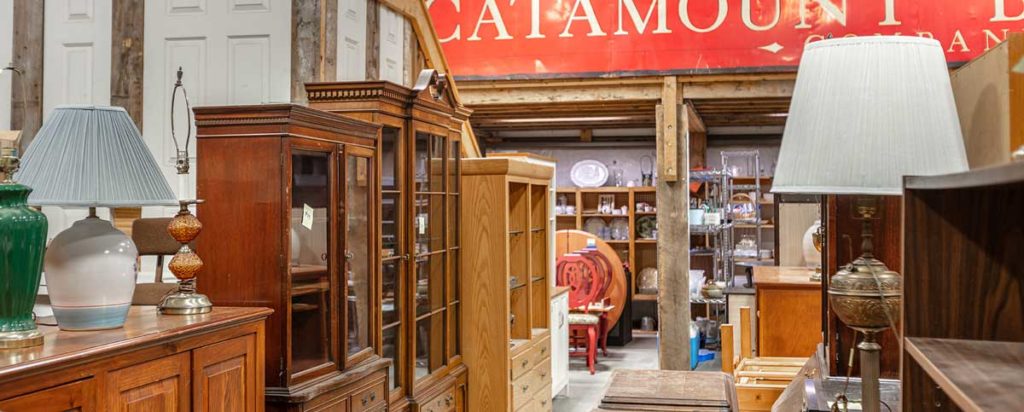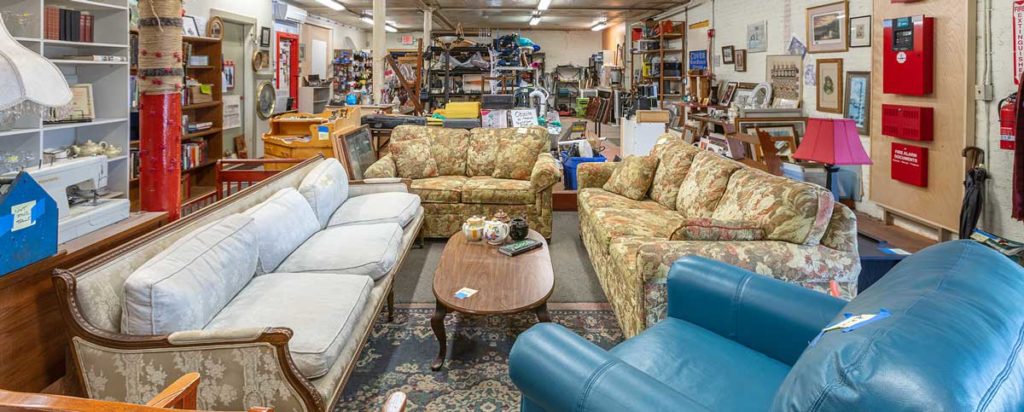
Image Magazine Spring 2020 Feature
Making Miracles Happen in the Upper Valley
by Mark Aiken
Photos by Jim Mauchly/Mountain Graphics Photography
Last year, Korean War veteran Clyde Brown suffered a broken neck and a stroke. “They don’t know in which order,” his wife of 62 years Mary explains, noting that the stroke could have caused him to
fall or that the trauma could have induced the stroke. “It doesn’t really matter,” she says. What does matter is that months after his return home, Clyde suffered a second stroke.
This time, relegated to a wheelchair, his return was more complicated as their home has stairs, narrow doorways, and no walk-in shower. “I couldn’t do this,” says Mary, who lives on a fixed income and wouldn’t be able to afford the renovations necessary for Clyde to return home. “We needed a
miracle,” says Mary.
If, like Mary, you’re in need of a miracle, where would you look? Fortunately for Mary and hundreds of other lower-income, disabled, elderly, or otherwise challenged Upper Valley residents, there are miracle workers in the area. They are known as COVER Home Repair—a nonprofit based in White River Junction that uses volunteers to complete urgently needed home repairs for low-income homeowners. The acronym COVER stands for Corps of Volunteers Effecting Repair and Reuse.

Local Miracle Workers
“We work with people who have circumstances that leave them feeling isolated and helpless,” says COVER Executive Director Bill Neukomm. The miracles that COVER makes happen don’t fall out of the sky; they are planned, intentional, and deliberate—and a result of the hard work and collaboration of donors, volunteers, agencies, businesses, and the COVER staff.
There are two components of COVER’s operation: the home repair service and a retail store. The store, an 8,000-squarefoot retail space in the old Catamount Brewing building on Main Street in White River (cofounder Simon Dennis acquired the building at a foreclosure auction in 2004), sells used building supplies, tools, and furniture. People can bring donations to the store, but if they are unable (or if the donation is unwieldy), COVER can travel. Meanwhile, applications for home repairs come from both individuals and agencies advocating for homeowners.
Applications are reviewed and COVER sends staff to meet with homeowners, inspect the site, and assess the project. Then dates are set, volunteers arranged, and repairs made. “We have pretty good systems in place,” says John Heath, COVER’s director of home repair, in a massive understatement.

How to Make Miracles Happen
To perform these sorts of home repair miracles, you need a few things: visionary founders (in COVER’s case Simon Dennis and Nancy Bloomfield founded the organization in 1998), a focused director (Bill), and a quality staff. You need a dedicated board and generous donors like Mascoma Bank, Hanover tech company Hypertherm, and many others. And—perhaps most importantly—you need community volunteers. “Last year we had over 400 volunteers,” says Bill. COVER volunteer crews perform renovations and repairs in more than 100 homes per year.
While COVER has focused successfully in recent years on increasing revenues from the retail store in order to improve the nonprofit’s stability, donations from businesses, foundations, organizations, and individuals remain critically important. John sums it up: “The more money there is, the more we can do.” In short, the more miracles COVER can work.

A Ramp and a Holdup
In early March, days before Vermont went into COVID-19 lockdown, COVER volunteers (including students from Hanover High School) arrived at Mary’s home. The crew started with a circle in which volunteers introduced themselves and group leaders went over the mission for the day. “I thought they were praying at first,” says Mary, who unabashedly believes the crew came in answer to her own prayers. “They were angels,” she says.
The thing about any philanthropic experience, whether it’s volunteering or making a cash donation, is that homeowners like Mary aren’t the only beneficiaries. “We pay a lot of attention to the volunteer experience,” says Bill. Volunteers learn new skills, meet new people, and experience a profound sense of accomplishment. “They really knew what they were doing,” says Mary. “And they were enjoying the work. The teachers were so patient and skilled. Angels,” she says again.
They built a wheelchair ramp in a day. Often, a COVER ramp build ends with the resident wheeling in the front door—but that wasn’t the case here. Mary and Clyde’s home needed more work: carpeting removed, doors widened, and a walk-in shower installed in place of a tub.
The coronavirus pandemic delayed this work. As we go to print, small COVER crews are mobilizing after a six-week hiatus, and the rest of Mary’s renovation is finally underway. COVER staffers and volunteers did not sit idle during the pandemic; they volunteered at food shelfs and other nonprofits, and COVER vehicles became mobile food shelfs.
Meanwhile, Mary and Clyde are spending time together on Zoom and phone calls as they wait for the work to finish. “I just can’t wait for him to come home,” says Mary. COVER, having missed months of work, is waiting to see how the post-crisis work environment will look. Here’s what we do know: “It’s important work,” says John. “We’re helping people whose lives are in crisis. And the need isn’t getting smaller.”
Fortunately, for those in need in the Upper Valley, COVER Home Repair makes miracle work their business. And as soon as there is more postpandemic clarity, work will resume.